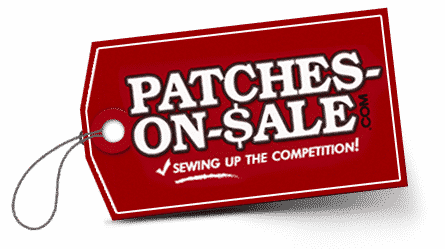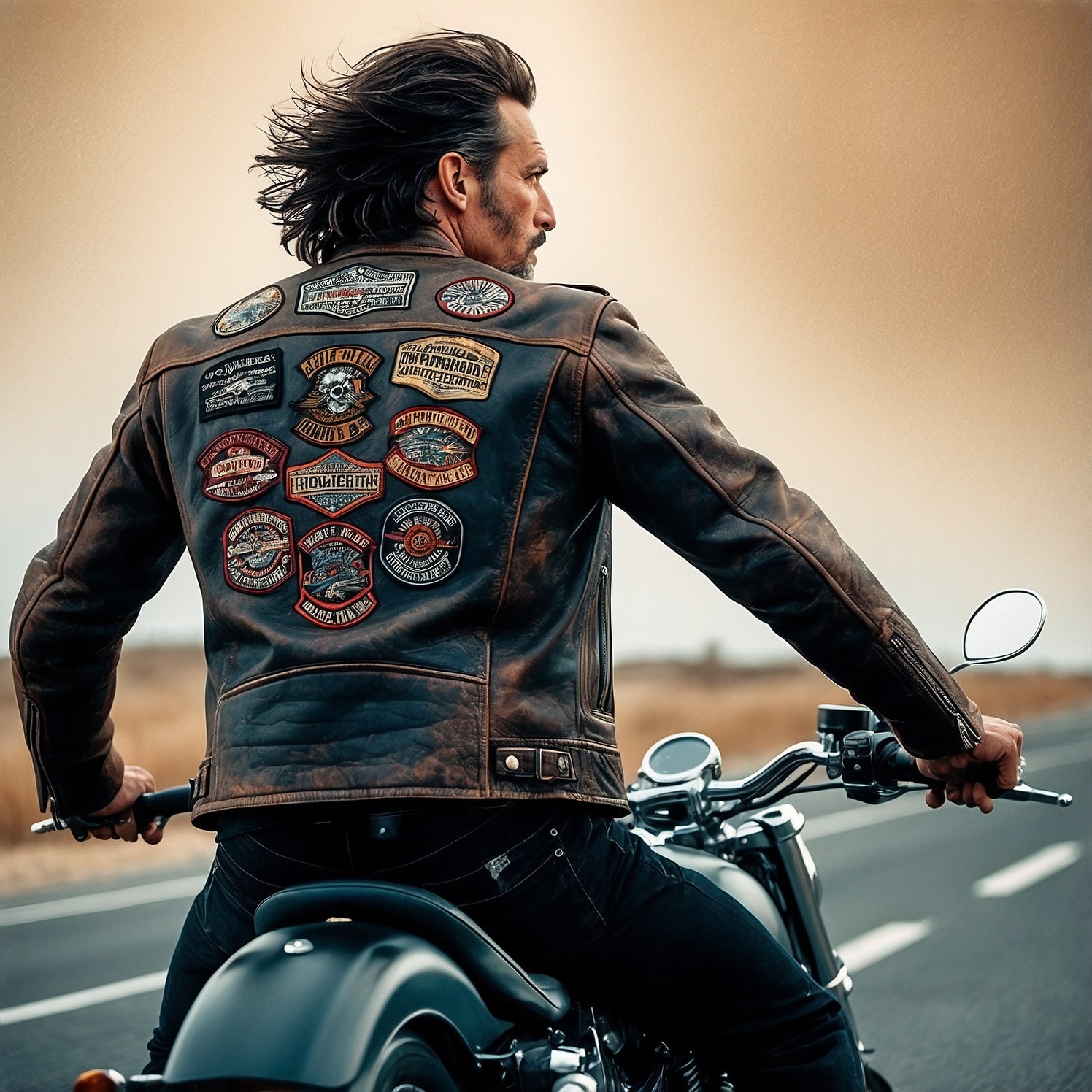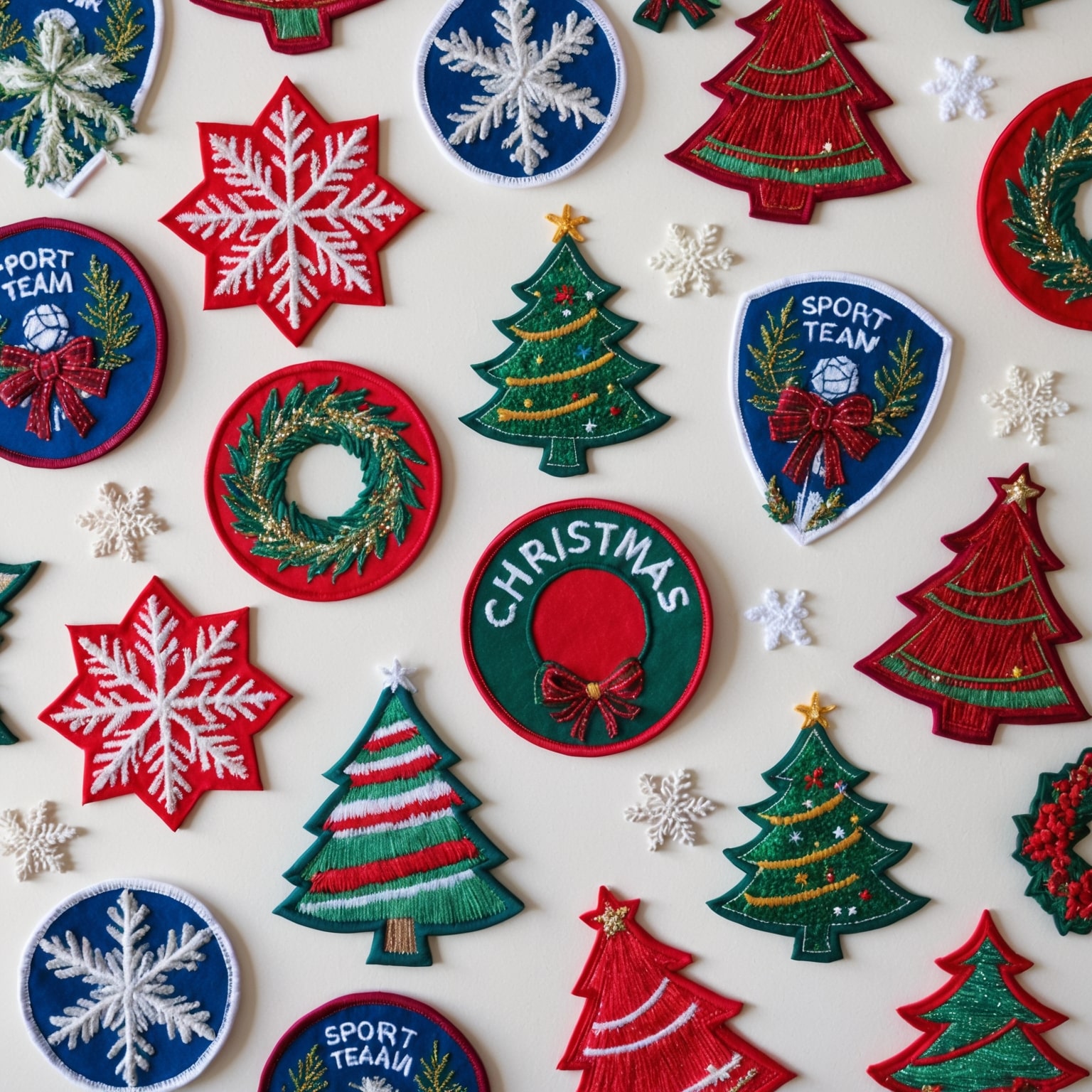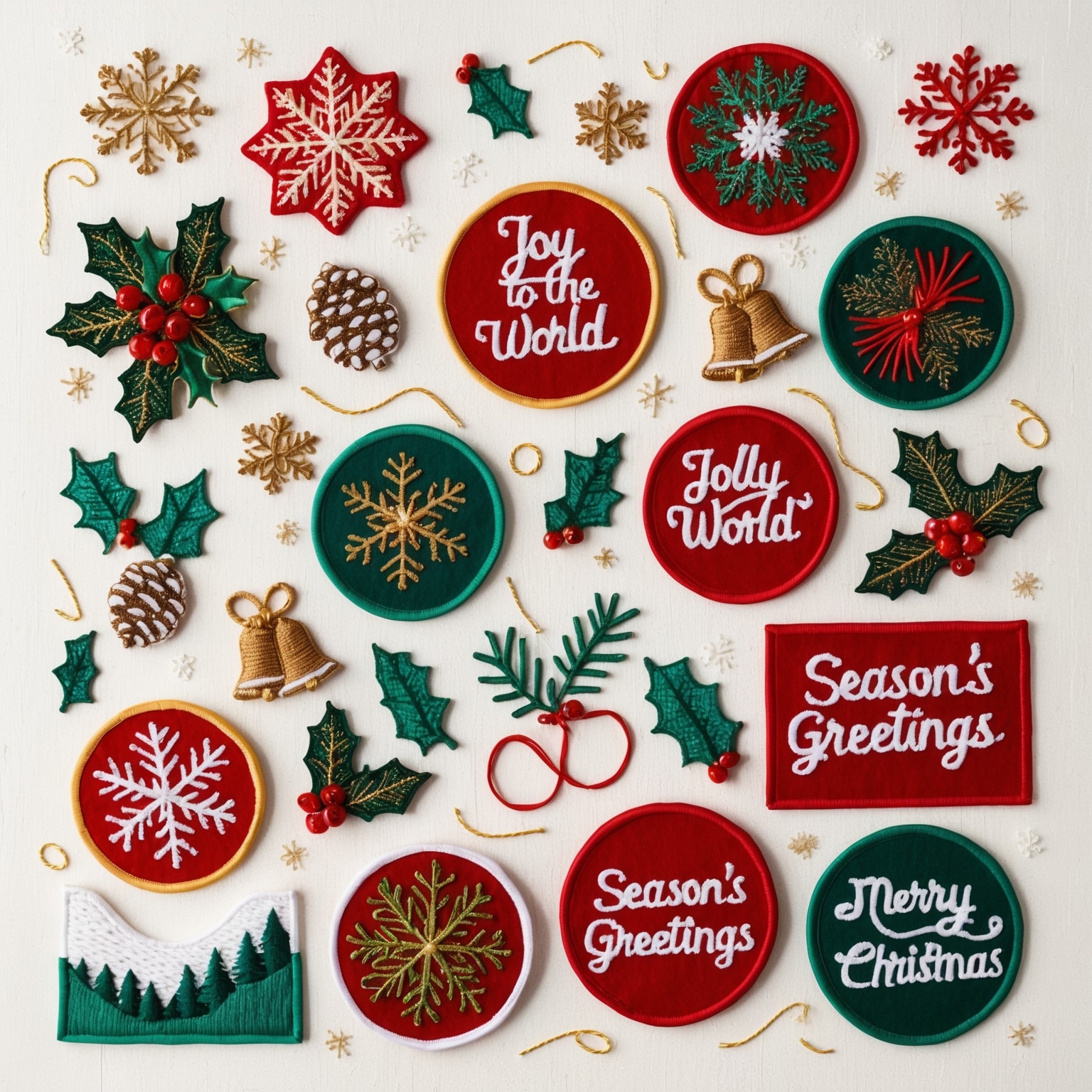Motorcycle clubs are built on values like brotherhood, freedom, and identity, all of which are visually represented through their motorcycle club patches. These patches aren’t just accessories—they carry deep meaning and are a proud symbol for members. Whether you’re part of an established club or starting a new one, designing an impactful patch involves more than just an eye for aesthetics. It’s about creating a design that captures the essence of the club and resonates with its members, while also standing out on the open road.
Designing motorcycle club patches requires a delicate balance of artistic expression, symbolism, and attention to detail. In this article, we’ll guide you through nine expert tips to help you design patches that truly embody your club’s spirit, mission, and history. Whether your club is focused on adventure, charity work, or rebellious freedom, these tips will ensure that your patch is a powerful representation of your club’s identity.
1. Understanding the Historical Significance of Motorcycle Club Patches
Before diving into the design process, it’s essential to understand the historical significance of motorcycle club patches. Motorcycle clubs have a long tradition of using patches as a way to signify membership, rank, and identity. The tradition began after World War II when returning soldiers, many of whom had developed a passion for riding during their military service, began forming motorcycle clubs. They adopted patches to represent their new “brotherhood” and as a way to carry forward the camaraderie they experienced in the military.
The Evolution of Patches
The early days of motorcycle clubs saw the rise of various patch designs that represented different elements of the club’s identity, including their values, region, and philosophy. These patches often mirrored military insignia, but over time, they evolved into symbols that reflected the unique lifestyle and rebellious spirit of bikers.
Today, motorcycle club patches remain a key part of club culture, not only representing the members’ allegiance but also serving as powerful symbols of the freedom that comes with the open road. The patches worn by bikers tell a story of unity, adventure, and the desire for independence, making them a crucial part of the club’s visual identity.
Different Types of Patches
There are generally three types of motorcycle club patches, each with its own significance:
- One-Piece Patch: Typically worn by family-friendly or riding clubs, these patches usually display the club’s emblem in a single piece. They often represent casual or less formal clubs.
- Two-Piece Patch: Often used by clubs in transition, these patches indicate that the group is either moving toward becoming a recognized motorcycle club or wishes to distinguish itself from more casual riding groups.
- Three-Piece Patch (Colors): This is the most recognizable form of motorcycle club patches and is traditionally worn by established and formal clubs, particularly “outlaw” clubs. A three-piece patch consists of the club’s name (top rocker), the club’s logo or emblem (center patch), and the region or chapter (bottom rocker). This style represents a club’s formal identity and carries deeper significance within the motorcycle community.
Example:
The iconic three-piece patch style, widely seen on the leather jackets of outlaw motorcycle clubs, has become synonymous with freedom, loyalty, and the spirit of rebellion. A well-designed three-piece patch tells the story of the club’s origin, values, and brotherhood in a way that words simply can’t.
2. Aligning the Patch with Your Club’s Identity and Values
At the core of every great motorcycle club patch is a reflection of the club’s identity and values. Whether your club prides itself on being rebellious, charitable, adventurous, or family-oriented, your patch should capture the essence of your organization. Understanding your club’s core principles will guide the design process and help you make decisions about everything from colors to symbols.
Questions to Consider When Defining Your Club’s Identity:
- What’s the primary focus of your club? Is it charity work, long-distance touring, or a love for vintage motorcycles?
- What are the values that bring your members together? Brotherhood, freedom, loyalty, or service?
- What makes your club unique in comparison to others in your area or across the country?
By answering these questions, you will gain a clearer vision of what your patch should represent. Your patch should not only be visually striking but also communicate something meaningful about your club to anyone who sees it.
Example:
A club dedicated to long-distance touring might include imagery of roads, open skies, or scenic landscapes in their patch, while a club focused on charity might feature hearts or symbols of giving.
3. Choosing Iconic Symbols and Imagery
Symbols and imagery are at the heart of effective motorcycle club patches. Whether it’s a skull representing rebellion or a wolf symbolizing loyalty, the imagery you choose should have a strong connection to your club’s ethos. When done right, the symbols on your patch will evoke pride and loyalty among members and command respect from outsiders.
Popular Symbols in Motorcycle Club Patches:
- Skulls: Representing fearlessness and rebellion, skulls are often used in motorcycle patches to signify toughness and a willingness to live on the edge.
- Wings: Symbolizing freedom and the thrill of the open road, wings are a common feature in club patches. They can be designed to look like eagle wings, angel wings, or even bat wings depending on the club’s theme.
- Animals: Many clubs use animals like eagles, wolves, lions, and snakes in their patches. Each animal carries its own meaning—eagles for freedom, wolves for loyalty, lions for strength, and snakes for cunning.
- Motorcycle Parts: Some clubs include imagery of motorcycles or specific parts like engines, pistons, or tires, emphasizing their love for the machine itself.
Example:
A club that values freedom and the open road may incorporate eagle wings, along with a highway motif, while a club that prides itself on brotherhood could opt for symbols like chains or hands clasped in solidarity.
4. Creating a Memorable Color Scheme
Color is one of the most powerful tools in designing an impactful patch. The color choices you make for your motorcycle club patches should reflect the personality of your club while ensuring the patch stands out and is instantly recognizable. Certain colors carry universal meanings, while others can be personalized to suit your club’s identity.
Popular Color Choices and Their Meanings:
- Black: Represents power, rebellion, and authority. It’s the most common background color for motorcycle club patches because it provides contrast and visual strength.
- Red: Symbolizes passion, energy, and danger. Red is often used to highlight bold, aggressive elements in a patch.
- Gold: Reflects honor, achievement, and pride. It’s often used to add a touch of prestige or signify high-ranking members within the club.
- Blue: Represents loyalty, trust, and calm. It’s a popular choice for clubs that value brotherhood or have ties to law enforcement.
- White: Signifies purity, clarity, and peace. White is often used to provide contrast against darker colors.
Choosing a color palette that reflects your club’s identity is crucial. The colors you select should complement each other and enhance the overall visibility of the patch. Ensure that the patch remains easy to recognize from a distance—after all, many patches are worn on the back of jackets while riding.
Example:
A club that rides in desert terrain might incorporate shades of brown, yellow, and red, symbolizing the arid landscapes they traverse. A coastal club, on the other hand, might opt for blues and whites to reflect the oceanic themes tied to their location.
5. Ensuring Text is Clear and Legible
While the imagery on a motorcycle club patch is crucial, the text that accompanies it is equally important. Whether it’s the club’s name, chapter, or motto, the text on your patch needs to be legible from a distance. Avoid overly complicated fonts or too much text, as this can clutter the design and make it hard to read.
Choosing the Right Font for Your Club:
- Blocky Fonts: These fonts are bold and easy to read, making them a popular choice for motorcycle patches.
- Serif Fonts: These fonts convey a classic, traditional feel and can be used for more vintage or old-school clubs.
- Gothic Fonts: Often associated with rebellion or outlaw clubs, gothic or “blackletter” fonts add an aggressive, edgy feel to the patch.
In addition to font choice, it’s important to pay attention to size and contrast. The text should stand out against the background, with enough spacing around it so that it doesn’t feel cramped. Additionally, keep in mind the placement of the text in relation to other elements, such as symbols and imagery.
Example:
A club with an emphasis on long-standing traditions might use a serif font with a vintage flair, while a modern, high-energy club may opt for a bold, blocky font to ensure maximum readability.
6. Balancing Symbolism and Design Elements
Creating an impactful motorcycle club patch requires a balance between all the different design elements—text, symbols, colors, and background details. Each of these elements should work together harmoniously to create a unified design that’s easy to recognize and understand. Overloading the patch with too many details can make it difficult to read or identify from a distance, so balance is key.
Tips for Creating a Balanced Design:
- Symmetry: If your design includes wings, animals, or other elements that lend themselves to symmetry, use this to your advantage to create a patch that feels balanced and visually cohesive.
- Spacing: Make sure there’s enough space between the different design elements. Crowding the patch can make it hard to read and reduce its overall impact.
- Focal Point: The central emblem or logo should be the focal point of the design, drawing the eye immediately. The top and bottom rockers should complement, rather than compete with, the central image.
By creating a balance between the text, imagery, and colors, you ensure that your patch is visually striking without being overwhelming or confusing.
Example:
A club that uses a skull as its central emblem might balance the design with wings on either side, ensuring that the text rockers sit neatly above and below the image, with plenty of space for legibility.
7. Choosing High-Quality Materials
When creating motorcycle club patches, the quality of the materials used is just as important as the design. Your patch will likely be worn in various weather conditions—rain, sun, wind, and possibly even snow. You need to choose materials that are durable and long-lasting to ensure your patch maintains its visual appeal over time.
Materials to Consider:
- Embroidery: High-quality embroidery is the most common material for patches. It’s durable, vibrant, and can withstand the rigors of outdoor riding.
- Iron-On vs. Sew-On: While iron-on patches may be easier to apply, sew-on patches offer greater durability, especially for clubs that want their patches to remain securely attached to leather jackets or vests.
- Thread Quality: Use colorfast threads that won’t fade or bleed when exposed to the elements.
The longevity of your patch will depend largely on the quality of the materials and the craftsmanship involved in its creation. Choosing high-quality threads and fabrics will ensure that your club’s patch remains vibrant and legible for years to come.
Example:
A club that rides in all types of weather would benefit from embroidered patches with a sew-on backing. This ensures the patch remains securely attached to jackets, even after long rides in tough conditions.
8. Personalize with Chapter and Regional Details
Many larger motorcycle clubs have multiple chapters or regions, each with its own local identity. Including chapter or regional details on the patch is a way to personalize it for members while maintaining the overarching club identity. Typically, this information is included in the bottom rocker of a three-piece patch.
Example:
A club with multiple chapters across different states might include the specific region in the bottom rocker, such as “California Chapter” or “New York Chapter.” This creates a sense of belonging for members, while the central emblem unites all chapters under the same banner.
9. Get Feedback and Make Adjustments
Once you have a patch design in mind, it’s important to get feedback from other club members. After all, the patch represents the entire group, and it’s essential that everyone feels connected to the final design. Show the patch to club leaders or core members, gather input, and be open to making adjustments.
Consider producing a few sample patches to test how they look on actual jackets or vests. Seeing the patch in real life can reveal potential issues with color contrast, text size, or spacing that might not be evident in the initial design.
Example:
Before committing to a full production run, a club might produce a few sample patches to test on different types of jackets or vests. Members can provide feedback on whether the patch accurately represents the club’s identity and make suggestions for improvement if needed.
Designing Impactful Motorcycle Club Patches
Creating impactful motorcycle club patches involves more than just aesthetics; it’s about representing your club’s history, values, and identity in a meaningful way. By understanding the traditions behind motorcycle patches, choosing the right symbols, balancing design elements, and using high-quality materials, you can craft a patch that members wear with pride for years to come.
Whether your club is just starting out or you’re looking to redesign an existing patch, these expert tips will help guide you in creating a design that not only looks great but also tells the story of your club’s journey.
If you are interested in purchasing high-quality custom patches, feel free to call us at 1-877-503-8485 or fill out one of our FREE quotes here.




